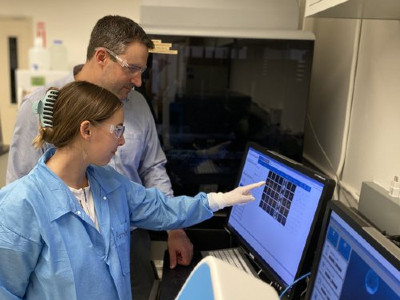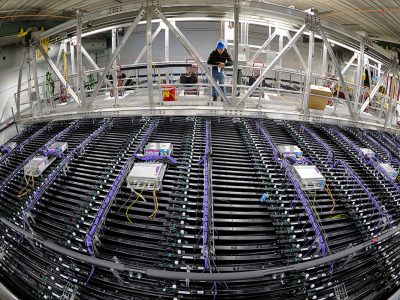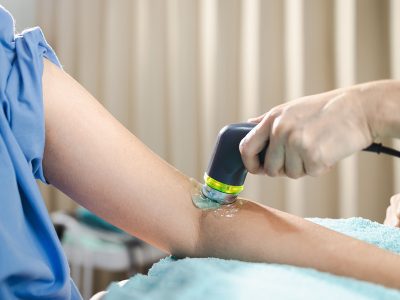Proving a sexual assault case in a courtroom often presents multiple challenges, but Research Assistant Professor Mike Marciano is working to help change that.
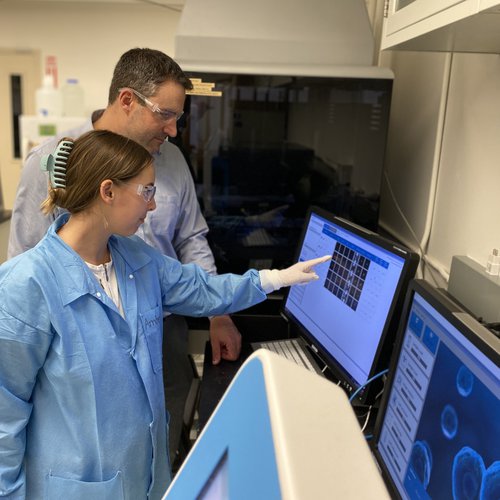
Director of Research for the Forensic and National Security Sciences Institute (FNSSI) in the College of Arts and Sciences, Marciano recently contributed to the National Institute of Justice May 2022 Forensic Technology Center of Excellence report, “A Landscape Study Examining Technology and Automation for Differential Extraction and Sperm Separation for Sexual Assault Investigations.” A subject matter expert who earned his doctorate at Syracuse, Marciano authored a section called “Syracuse University Examined the Use of the DEPArray System to Assess Challenging Sexual Assault Kit Samples.”
In the simplest terms, the current method of gathering forensic evidence from sexual assault victims involves retrieving samples, which are then tested for DNA. If DNA is found, it is entered into the FBI’s DNA Index System, which allows law enforcement to search for matches that can identify possible offenders, link cases together or provide other critical information that may help solve crimes. This has long been the standard process of DNA testing, but it is time consuming and does not typically have the capabilities to detect DNA from very small samples or those provided more than 72 hours after a sexual assault.
In 2013, Marciano was approached by a former colleague who asked if he might be interested in testing a new piece of equipment with the capabilities to better detect DNA. Marciano has devoted his career to this type of work, having started in a crime lab at the Onondaga County (New York) Center for Forensic Science. He then moved on to be a senior scientist at research and development company SRC before joining the University, where he now overseas research for FNSSI. The opportunity to try this new technology was something he couldn’t refuse.
The DEPArray NxT System (above) was created by Italian company Manarini Silicon Biosystems for use in cancer research, but it has since been found to have additional uses. According to Marciano, it separates the epithelial (or skin) cells and sperm cells prior to extraction through a process that can more quickly and efficiently calculate the total number of epithelial cells and sperms cells, as well as the amount of DNA in a sample, while also removing possible impurities.
In addition, the DEPArray makes it possible to identify DNA even when very small samples of sperm are found, from samples taken after 72 hours or in cases where there are mixed samples with multiple contributors—things current methods often can’t detect.
“At FNSSI, we have completed up to 200 runs on these instruments. We know how they work, front to back, and we are hoping to increase the sensitivity for the forensic community and even potentially provide services,” Marciano says. “It’s our mission to keep supporting innovation in forensic genetics and moving it forward. It’s exciting work!”
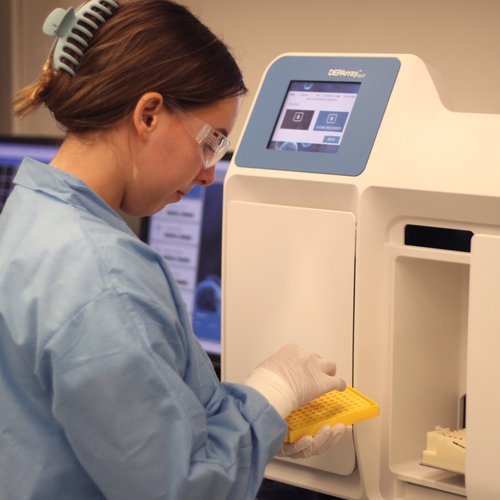
While the technology offered by the DEPArray is promising, the challenge is that its results are currently not accepted in a court of law.
“The methods already in place are tried and true, and there is always resistance to change,” he says of the standards of the legal system. “Academic researchers like myself need to compile enough evidence behind this new technology to prove that it really works well enough to become part of standard legal processes and be transitioned into the forensic world.”
In the meantime, he, with the help of students working at FNSSI, continue to test and document the DEPArray system’s capabilities.
“Our students are the first in the world to use this technology in a forensic setting,” Marciano explains. “They get the experience that is done in every crime lab in the world through FNSSI and also get to compare that to the methods we’re seeing with the DEPArray. Our students are going to go into jobs after graduation with firsthand experience in this breakthrough technology. And, I like to think that they will take that experience to move forensics like this even further.”
Marciano plans to continue his work with the DEPArray, having already published two articles and working on a third, while also applying for National Institute of Justice grants to access additional funding to support his research in this area.
“The hope is that the DEPArray will soon become a game changer in examining critical biological evidence in sexual assault cases that will make a real difference to victims and those in the forensic science community,” he says. “It’s fascinating and important, and I’m privileged to be a part of it.”
